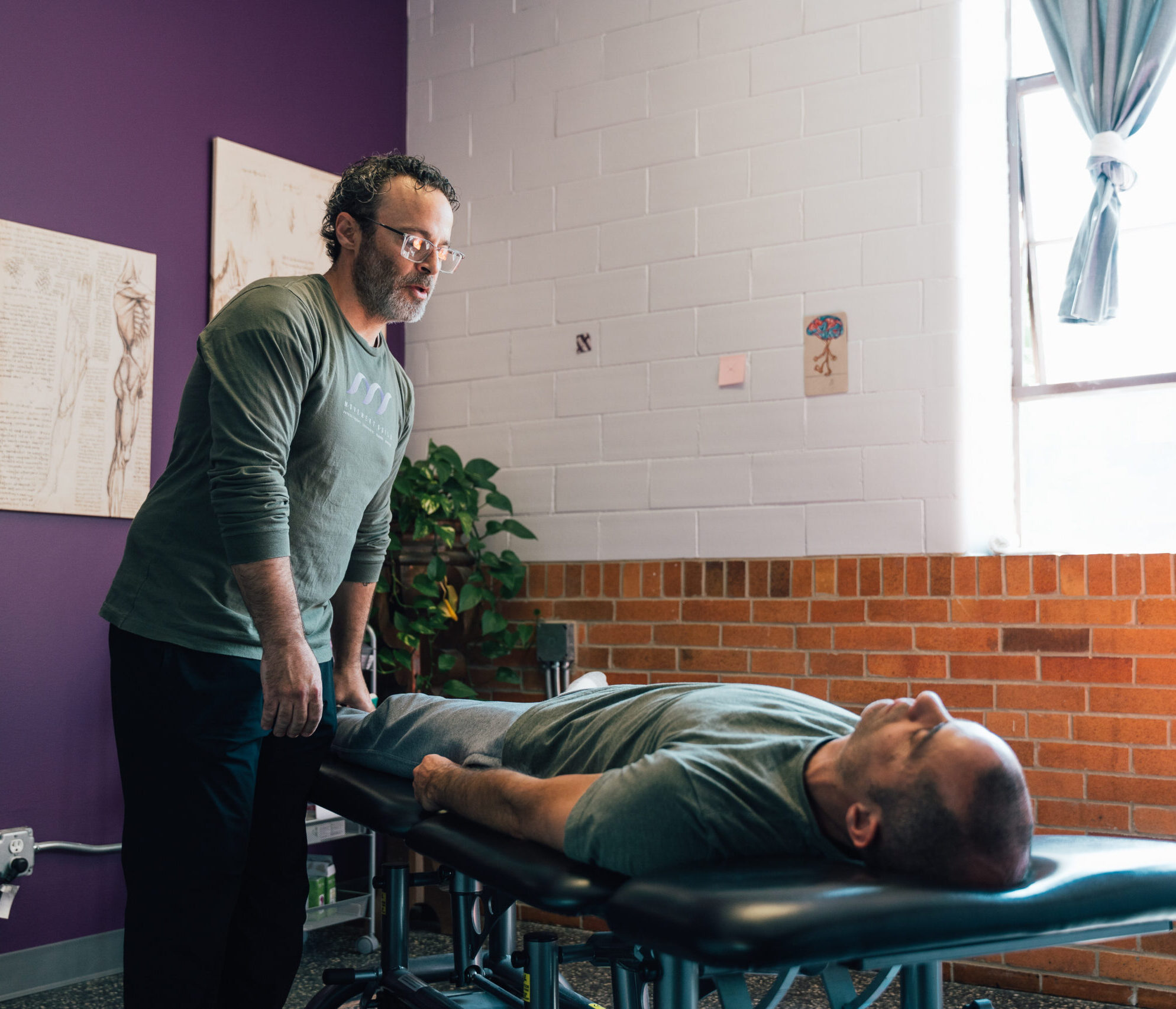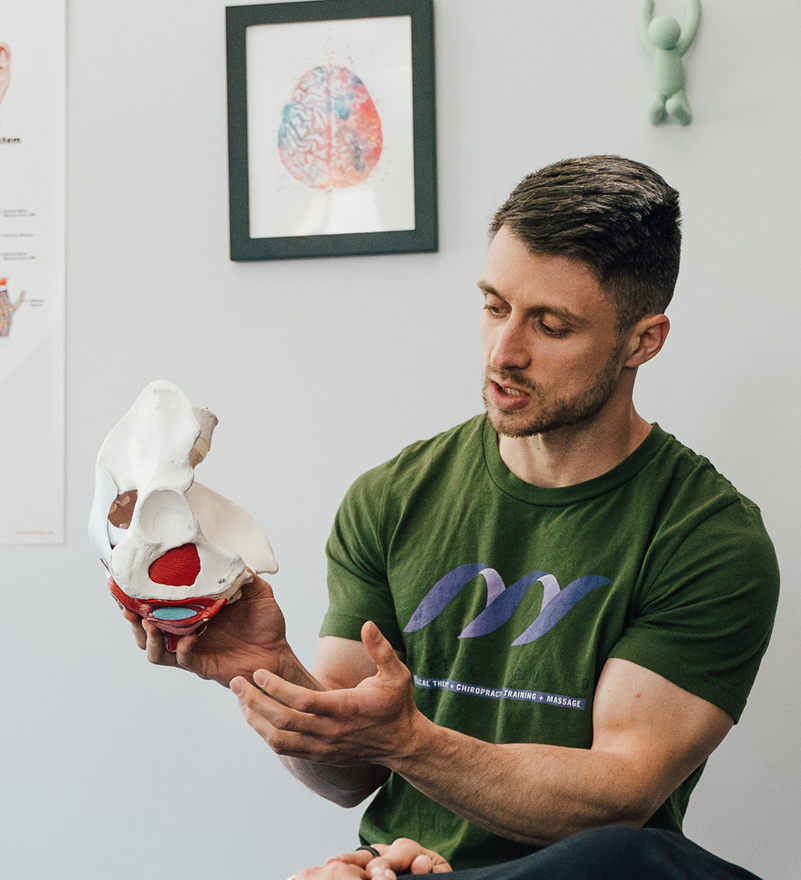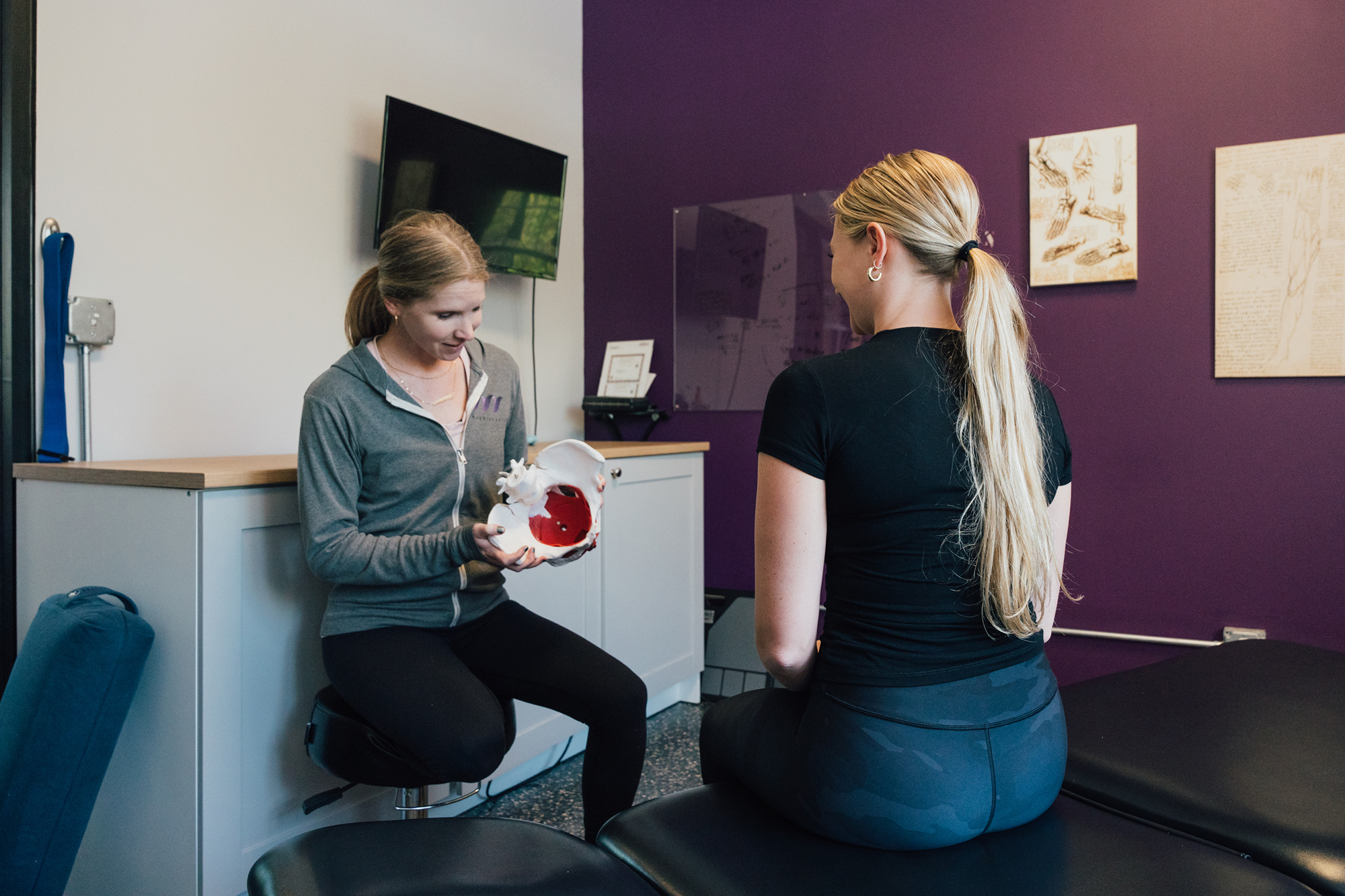Male pelvic health
What is it? Who needs it?
Both men & women have a pelvic floor. This is the layer of muscles between your abdomen and genital region. These muscles are primarily responsible for holding/releasing urine/feces, sexual function, and core stability (among other things). While there are sex-based differences in the pelvic floor functions and issues, there is also a lot of overlap.
Bottom-line, men have pelvic floor issues too, and the disparity in addressing these issues is large. In fact, We’re usually the 4th or 5th healthcare provider our patients have seen. Despite this, they can still show up with no idea of how physical therapy can help.
Our aim is to reduce this disparity by providing the most evidence-based treatments. Additionally, we aim to maximize comfort and reliability by pairing patients with therapists who share a similar anatomy.

What does male pelvic floor dysfunction look like?
The simplest way to mentally approach pelvic floor dysfunction is to understand it is a set of muscles, controlled by the nervous system. When these muscles operate incorrectly, problems can arise; some obvious, others not so much. If you thought leaking urine, and groin pain can be caused by the pelvic floor, you would be right.
What you may not expect is frequent bathroom use, erectile dysfunction, and lower back pain are also signs of dysfunction in these muscles. Many men assume these problems are “just the way it is” or are strictly managed by medication/surgery, but that couldn’t be farther from the truth.
They are solved with exercise, tissue mobilization strategies, and education just like a hamstring or shoulder.
female pelvic health
What is it? Who needs it?
Both females and males have a pelvic floor. This is the layer of muscles between your abdomen and genital region. These muscles are primarily responsible for core stability, sexual function, and holding/releasing urine and feces.
The pelvic floor’s function depends on the ability of this muscular sling to respond to changes in intra-abdominal pressure and coordinate properly timed and appropriately forceful contractions to avoid issues in these areas.
Anyone experiencing pelvic pain, issues with holding urine, pain with sex, urinary frequency, prolapse, or postpartum can benefit from pelvic floor therapy.

What does female pelvic floor therapy look like?
Like any other muscle, those in the pelvic floor must be able to get long (or relax) before they can get short, and many issues stem from hypertonicity (or spasm) in the pelvic floor. Muscles need to be able to relax before they can be asked to contract effectively. This can be achieved through relaxation strategies, manual soft tissue mobilization, and positional lengthening. In some cases muscles become hypertonic due to functional demand exceeding their capacity (relative weakness), and frequently specific strengthening of the pelvic floor is also necessary.
Most importantly, a pelvic floor therapist will be able to verify that a client can effectively elicit pelvic floor contraction (and help them to learn how to find this area of their body if they cannot). Often women are told “just kegel” in order to solve their pelvic floor issues by many other healthcare providers, but unfortunately nearly half of women are not able to identify a contraction of their pelvic floor and when instructed to do so elicit the opposite action of what is desired (create downward pressure vs. lift).
The role of pelvic floor therapy is to empower clients to understand the role of the pelvic floor, what the cause of their symptoms is, and how to normalize the function of the pelvic floor to restore function.
What should you do if you think you may benefit from pelvic rehab?
Like most conditions, you can see a physical therapist directly. This said, we require my patients to see a medical doctor such as an internist, urologist, or OB/gyn if they plan to seek pelvic floor therapy. As mentioned, many of these conditions are caused and treated through the pelvic floor muscles, but more serious conditions may be the cause, and should be ruled out first. You can then contact info@movementguild.com to schedule an appointment
FREQUENTLY ASKED QUESTIONS
What is pelvic rehabilitation?
Pelvic rehabilitation involves therapeutic interventions aimed at addressing issues related to the pelvic floor muscles, which are responsible for various functions like urinary and fecal control, sexual function, and core stability.
How do I know if I need pelvic rehabilitation?
If you experience symptoms like pelvic pain, urinary/fecal incontinence, painful intercourse, or difficulties with bowel movements, consulting with a pelvic health specialist can help determine if pelvic rehabilitation is appropriate for you.
What does a pelvic rehabilitation session involve?
A pelvic rehabilitation session may include assessments, exercises, manual therapy techniques, education on pelvic health, and strategies to improve pelvic floor function and coordination.
What to expect at pelvic rehabilitation session?
During a pelvic rehabilitation session, you can expect a thorough evaluation of your symptoms and medical history, personalized treatment plan development, hands-on therapy techniques, and guidance on exercises and lifestyle modifications.
How you should prepare for a pelvic physical rehab session?
To prepare, wear loose clothing and maintain personal hygiene. Come with questions for your therapist and be ready to actively participate. Follow any pre-session instructions and stay relaxed to optimize the effectiveness of the session.
How long does it take for pelvic rehab to work?
The timeline for seeing results varies depending on individual factors such as the severity of symptoms, adherence to the treatment plan, and overall health status. Most of our patients see an improvement within the first few sessions


